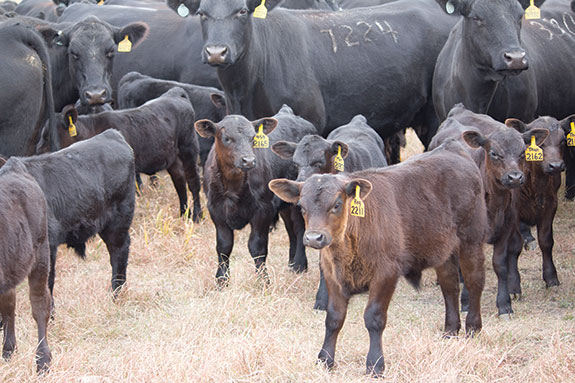Now more than ever, seedstock producers are investing their time and money in DNA technology to set their sales and their offerings apart from the competition.
Seedstock producers who utilize DNA information in their offerings and list the results in their sale catalog are not only getting a leg up on the competition, they are also allowing their customers to make better informed purchasing decisions.
But for the cow/calf producer, who may not be used to reading DNA results, the sales sheet could look like a bunch of acronyms and numbers, creating a potential missed opportunity in herd improvement.
In the past decade, advances in genomic technology have increased significantly, allowing producers to use this science to better identify an animal’s genetic potential for a variety of traits including calving ease, growth, carcass quality and fertility.
Some genetic tests look at specific genes to determine an animal’s genetic potential for a particular trait. Examples are coat color, horned/polled and various genetic abnormality tests such as curly calf and fawn calf.
In other instances, the goal is to examine genetic markers that give a prediction of an animal’s productive potential, or its ability to pass desirable traits to its progeny.
To simplify the use of what can be potentially complicated DNA test results, and to improve the accuracy of seedstock selection, many breed associations have spent years collaborating with research institutions and universities across the country to develop breed-specific genomic tests to incorporate into their respective breed EPD calculations.
The result of these efforts led to the availability of genomic-enhanced expected progeny differences (GE-EPDs) – a single common currency that combines DNA marker results with traditional recording data.
Using large genotyping chips containing more than 50,000 genetic markers, highly-proven cattle in many breeds have been profiled and the relationship between specific genetic markers and the EPD has been determined or “mapped.”
Once the relationship between gene markers and a trait is determined, new animals are genotyped and their genetic signature is used to predict future performance.

Most importantly in this process, the DNA information is used alongside pedigree data, the animal’s own performance (for traits like growth and ultrasound carcass characteristics) and the performance of its progeny, to ultimately create the GE-EPD.
The advantage of incorporating the genomic data into EPDs, allows producers to look at one set of genetic scores to determine an animal’s potential genetic merit.
And by including the genomic data into the EPDs, the resulting EPDs are much higher in accuracy for young, unproven animals than EPDs without the genomic data included.
Today, higher accuracy GE-EPDs are available for animals registered with the American Angus Association, American Hereford Association, American Simmental Association and the North American Limousin Foundation. In the coming months, additional breed associations will also offer GE-EPDs.
If breed-specific GE-EPDs are not available, for an unregistered animal for example, there are other options.
The National Beef Cattle Evaluation Consortium has worked with DNA service providers to validate panels of genetic markers shown to work in a number of breeds or cross-breeds.
In this instance, the data are not incorporated into a breed-specific EPD, but instead the DNA information is used alongside whatever other measure of animal performance you have.
As an example, the Igenity profile ranks animals on a 1-10 score based on whether they have more (or less) of a specific trait. In general, a higher score indicates greater genetic potential for that trait.
Incorporating DNA technology into a ranch management program allows producers to learn more about each animal’s true genetic potential earlier in life, which means herd improvement can be made faster. And faster genetic progress means a more efficient and profitable cow herd.
Cattle producers no longer have to wait until the first calf crop has been born, raised and harvested before they can make adjustments to their breeding program.
Using the power of DNA, seedstock producers can gain insight into an animal’s genetic merit earlier. The GE-EPDs can derive an estimate of genetic merit in a pre-weaned calf with an accuracy that previously would have required up to three years to determine.
This tells the producer – with a much higher degree of certainty – how well that yearling bull or replacement heifer will meet their herd goals.
Developing and purchasing seedstock is an important and long-lasting decision that can dramatically affect an operation’s profitability.
Producers should not leave their profitability to chance by selecting cattle without knowing as much information as possible about an animal’s true genetic potential. ![]()
PHOTO
New genomic-enhanced EPDs mean cattle producers must no longer wait until the first calf crop has been born, raised and harvested before they can make adjustments to their breeding program. Photo courtesy of Progressive Cattleman staff.
Stewart Bauck
Director of Beef Genomics
GeneSeek








